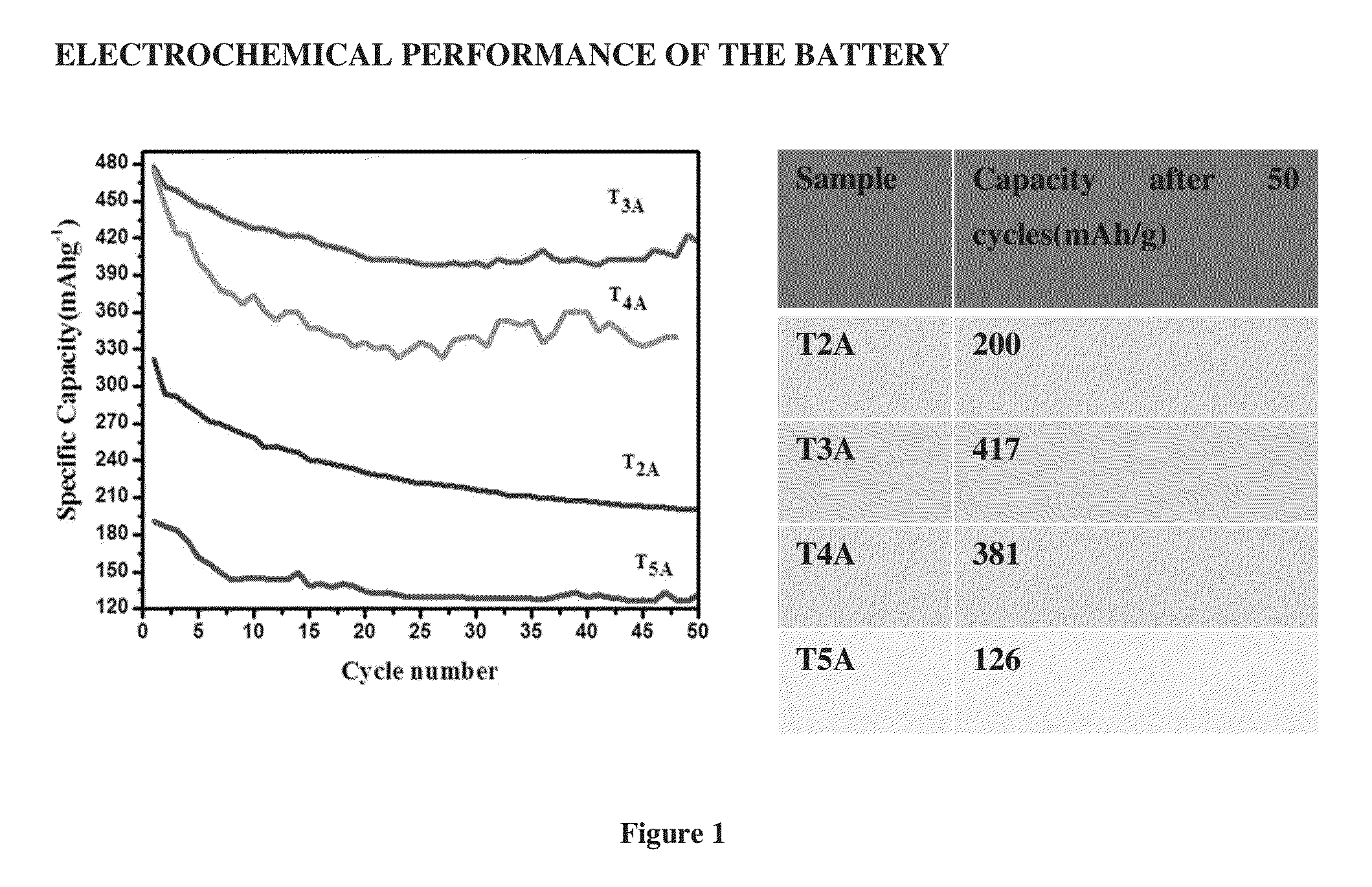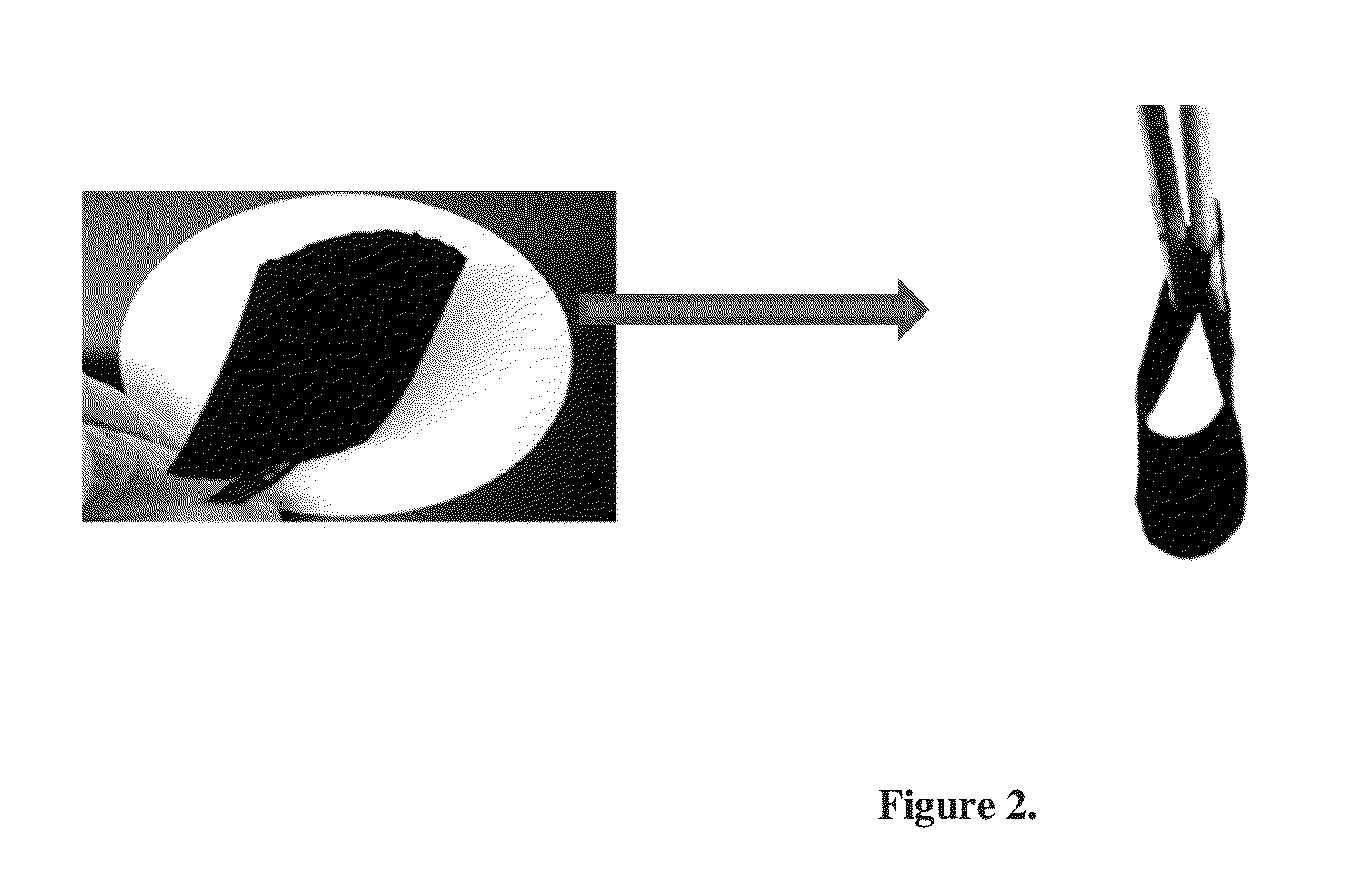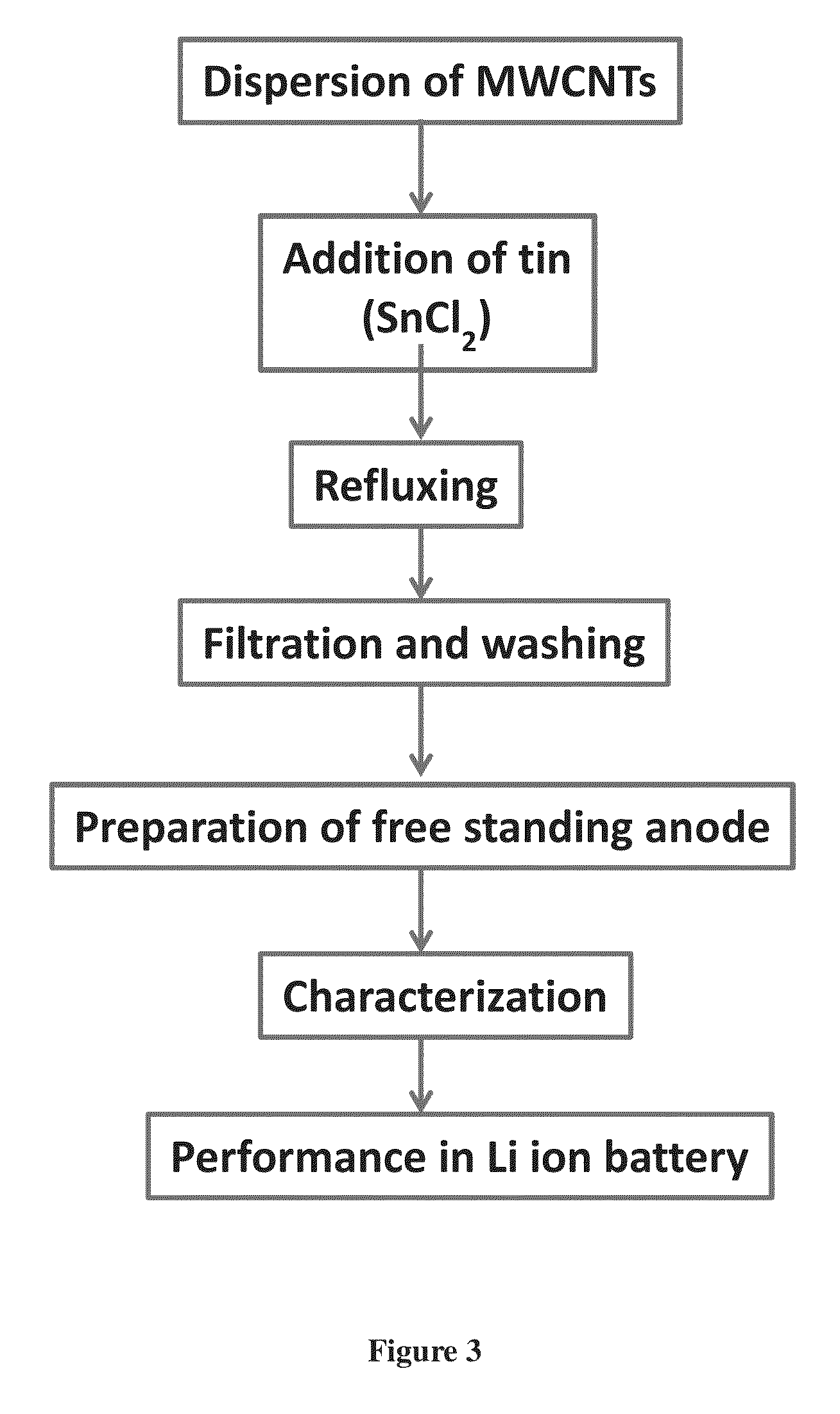Carbon nanotube-metal nanocomposites as flexible, free standing, binder free high performance anode for li –ion battery
a technology of carbon nanotubes and metal nanotubes, which is applied in the direction of non-metal conductors, cell components, conductors, etc., can solve the problems of cu current collectors, electrical conductors with minimal lithium storage performance, and anode materials prepared that are not free standing, etc., to achieve high capacity and flexibility, high reversible capacity, and fast and easy process
- Summary
- Abstract
- Description
- Claims
- Application Information
AI Technical Summary
Benefits of technology
Problems solved by technology
Method used
Image
Examples
example 1
[0057]0.1 g of MWCNT was dispersed in 150 ml ethylene glycol by ultra sonication. The sample was refluxed in air for 4 hours at 100° C. Refluxing was followed by washing with sufficient amounts of de-ionized water and drying. 0.1 g of the nanocomposites was dispersed in 100 ml of isopropyl alcohol by ultra sonication. The well dispersed tubes were vacuum filtered using filtration setup to obtain MWCNT paper which can be used as flexible, freestanding anode in Lithium ion batteries.
[0058]The free standing samples prepared as anode (with diameter 18 mm) were dried in vacuum oven and transferred into the gloves box and placed into the half cell consisting of lithium foil as a counter electrode, a separator (polypropylene film) and organic electrolyte (1M LiPF6 in 1:1 ratio of EC+DEC). The cell was allowed to age for 24 hours. Galvanostatic charge—discharge was carried out at C / 10 rate. The sample gave a discharge capacity of 136 mAh / g after 50 cycles.
example 2
[0059]0.3 g of multiwalled carbon nanotubes (MWCNTs) was dispersed in 150 ml ethylene glycol by ultra sonication. 0.01 M solution of SnCl2 in distilled water was added to the above suspension drop by drop with constant stirring such that the ratio of Sn:CNT was 1:4 (i.e. 20 wt % Sn: 80 wt % MWCNT). The pH of the above solution was measured and was found to be less than 2. The sample was refluxed in air for 4 hours at 100° C. Refluxing was followed by washing with sufficient amounts of de-ionized water and drying, thus producing the Tin(II) oxide / multiwalled carbon nanotubes nano composites.
[0060]0.1 g of the nanocomposites was dispersed in 100 ml of iso propyl alcohol by ultra sonication. The well dispersed tubes were vacuum filtered using filtration setup to obtain Tin(II) oxide / multiwalled carbon nanotubes paper which can be used as flexible, freestanding anode in Lithium ion batteries.
[0061]The sample gave a discharge capacity of 200 mAh / g after 50 cycles when used as anode in Li...
examples 3
[0062]0.3 g of multiwalled carbon nanotubes (MWCNTs) was dispersed in 150 ml ethylene glycol by ultra sonication.0.01 M solution of SnCl2 in distilled water was added to the above suspension drop by drop with constant stiffing such that the ratio of Sn:CNT was 1:4 (i.e. 20 wt % Sn: 80 wt % MWCNT). The pH of the above solution was measured and was found to be less than 2. The sample was refluxed in nitrogen for 4 hours at 100° C. Refluxing was followed by washing with sufficient amounts of de-ionized water and drying, thus producing the Tin(II) oxide / multiwalled carbon nanotubes nano composites.
[0063]0.1 g of the nanocomposites was dispersed in 100 ml of iso propyl alcohol by ultra sonication. The well dispersed tubes were vacuum filtered using filtration setup to obtain Tin (II) oxide / multiwalled carbon nanotubes paper which can be used as flexible, freestanding anode in Lithium ion batteries. The sample showed a capacity of 175 mAh / g after 30 cycles.
PUM
 Login to View More
Login to View More Abstract
Description
Claims
Application Information
 Login to View More
Login to View More - R&D
- Intellectual Property
- Life Sciences
- Materials
- Tech Scout
- Unparalleled Data Quality
- Higher Quality Content
- 60% Fewer Hallucinations
Browse by: Latest US Patents, China's latest patents, Technical Efficacy Thesaurus, Application Domain, Technology Topic, Popular Technical Reports.
© 2025 PatSnap. All rights reserved.Legal|Privacy policy|Modern Slavery Act Transparency Statement|Sitemap|About US| Contact US: help@patsnap.com



